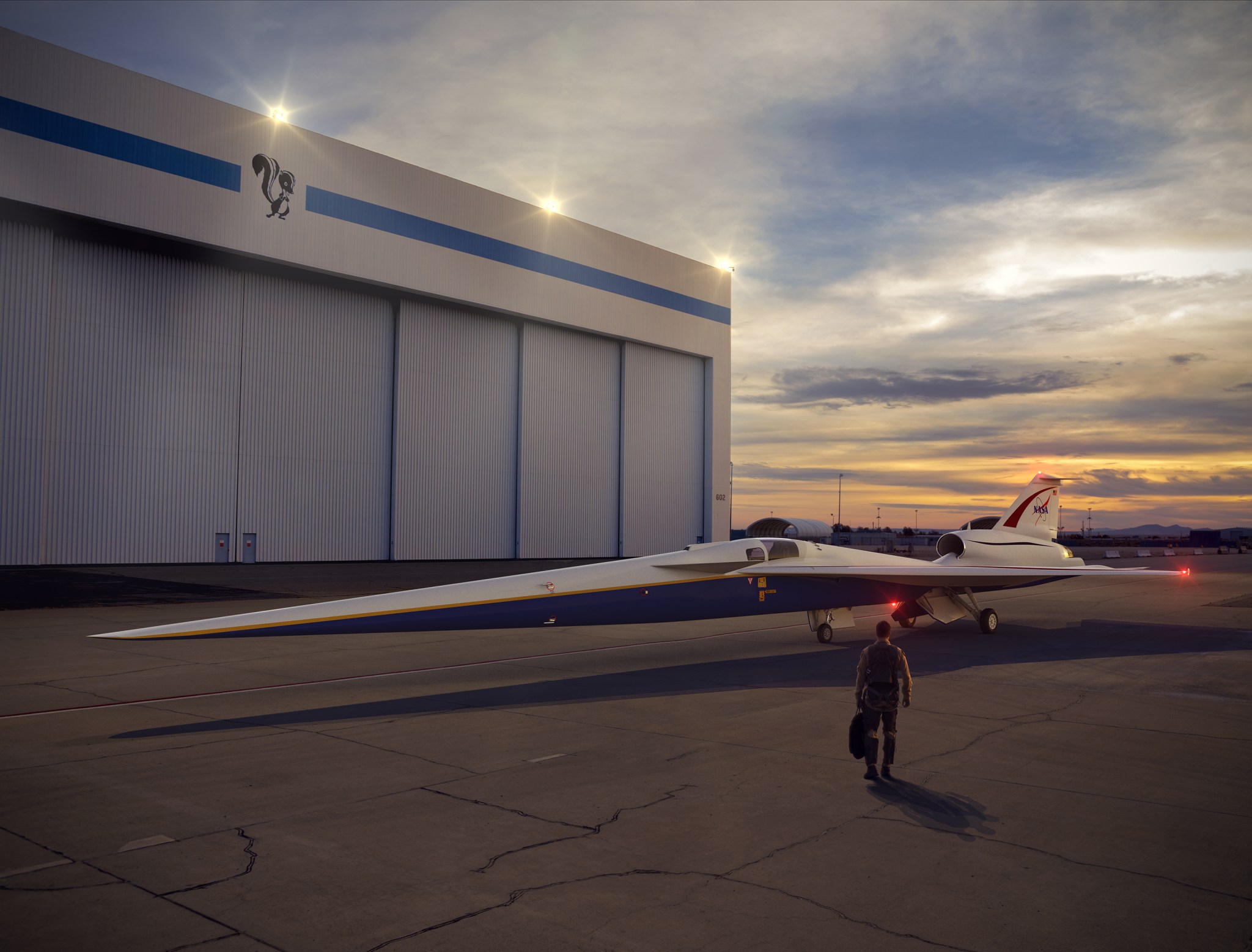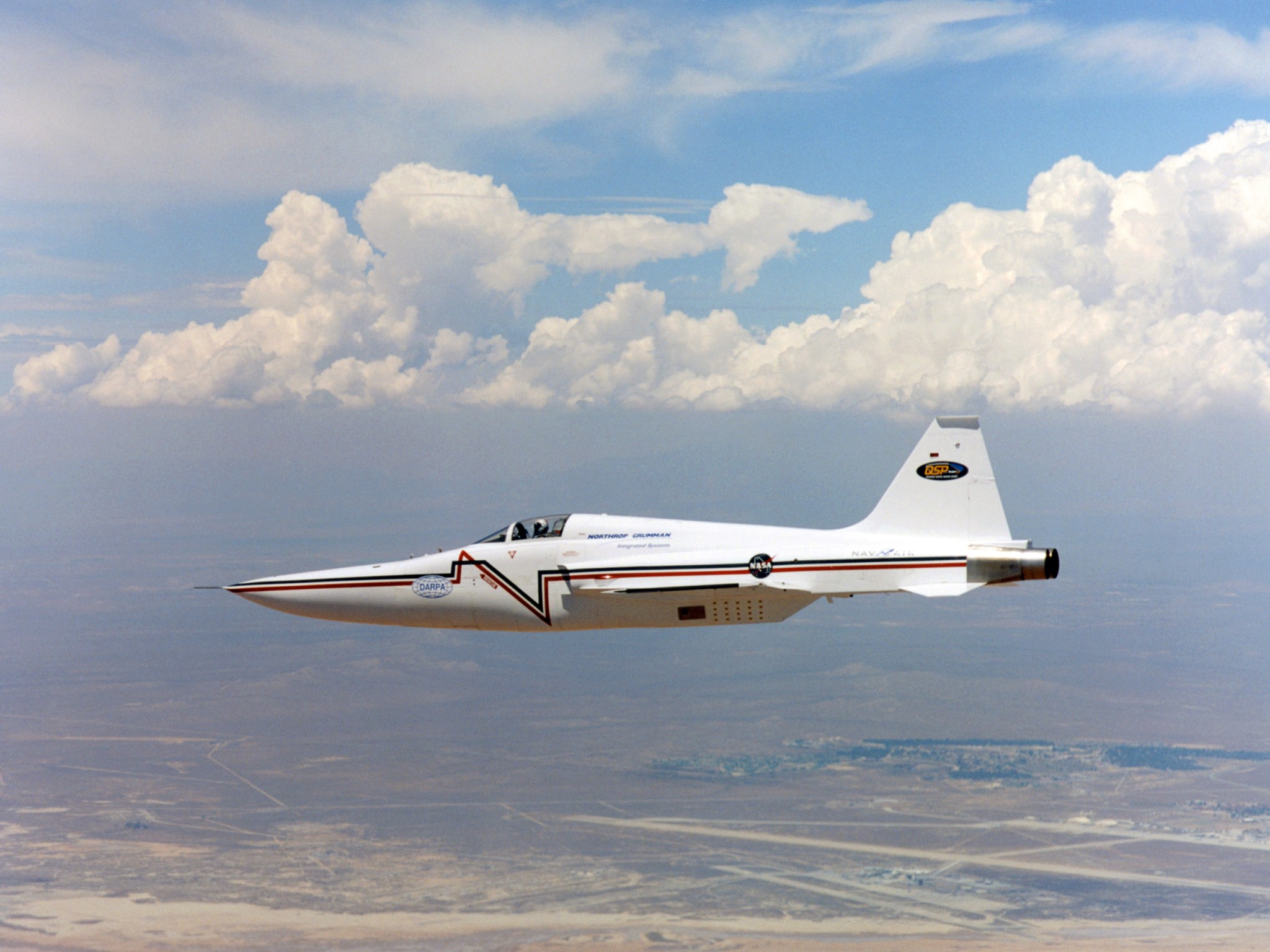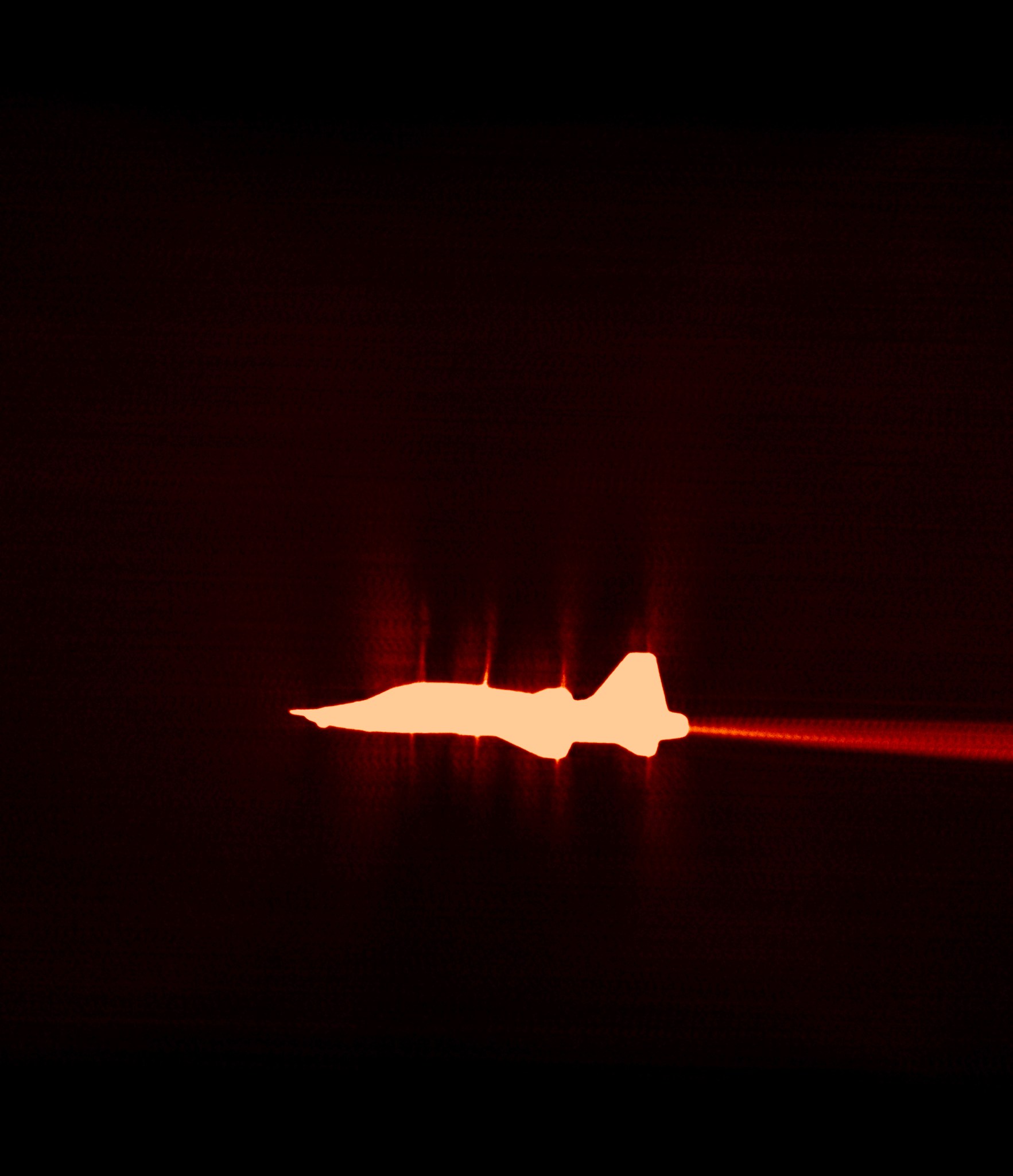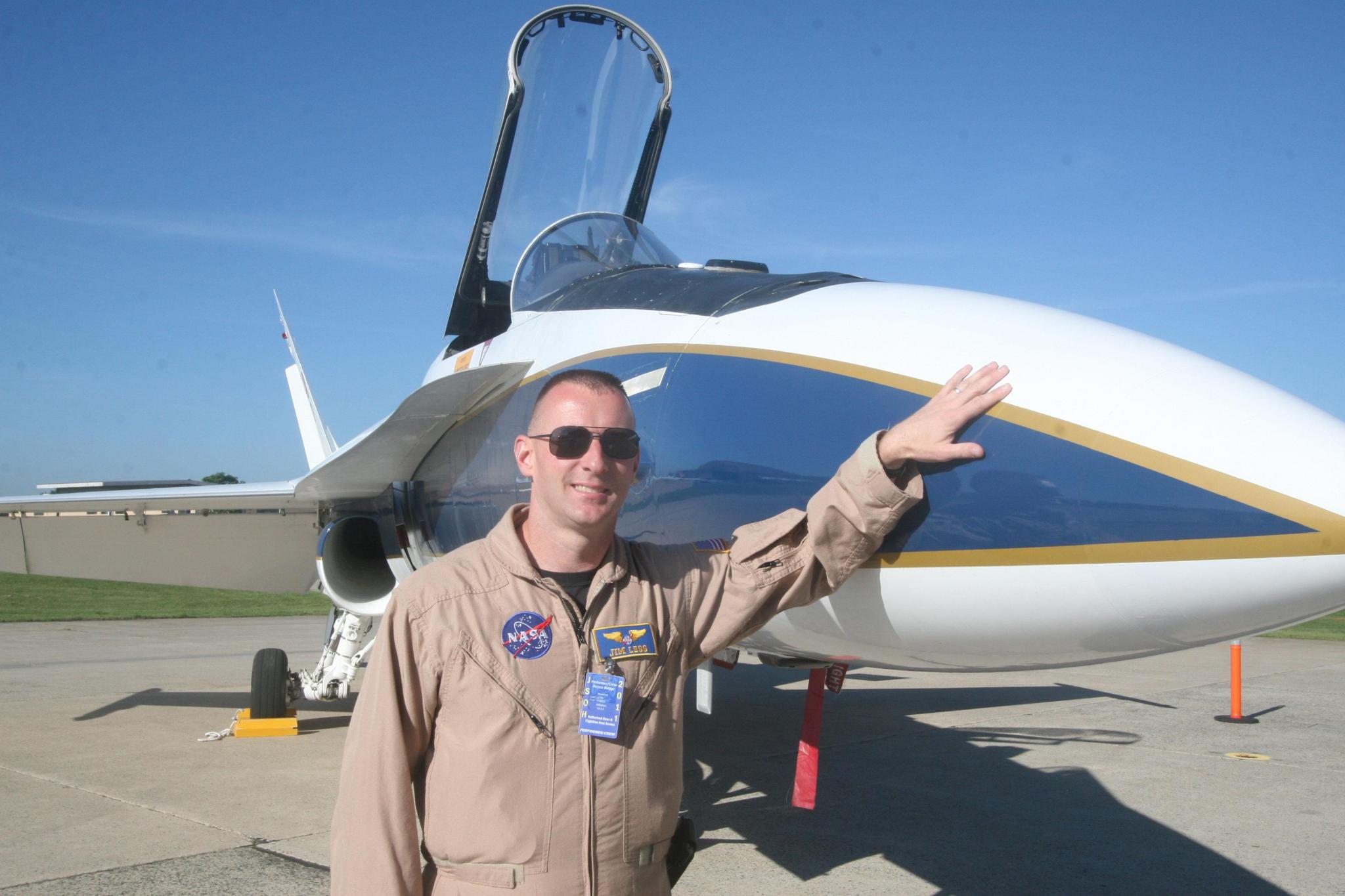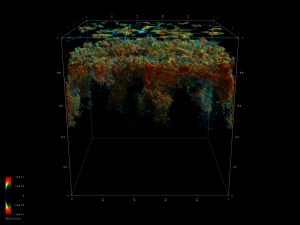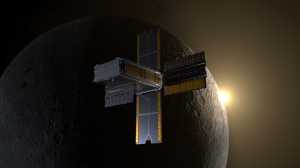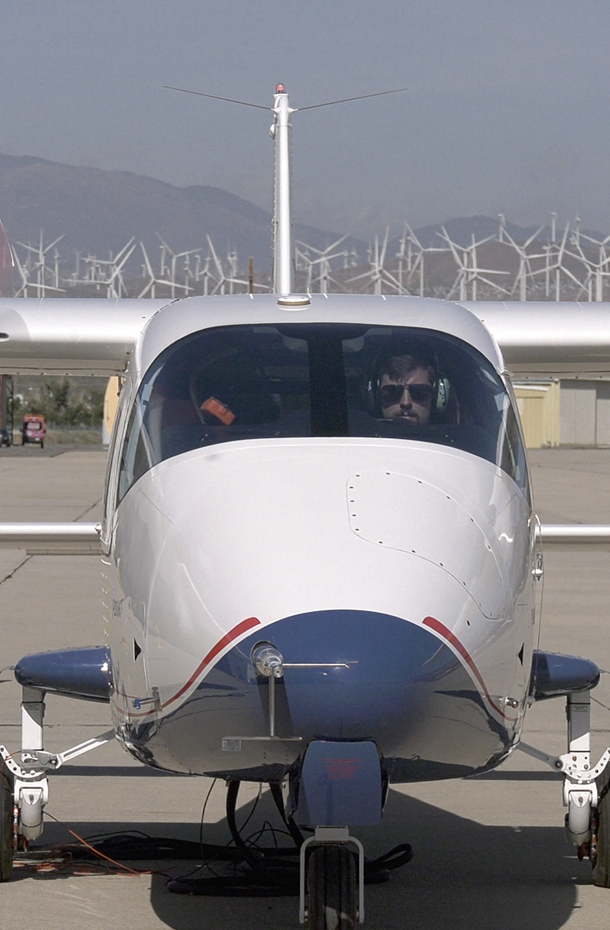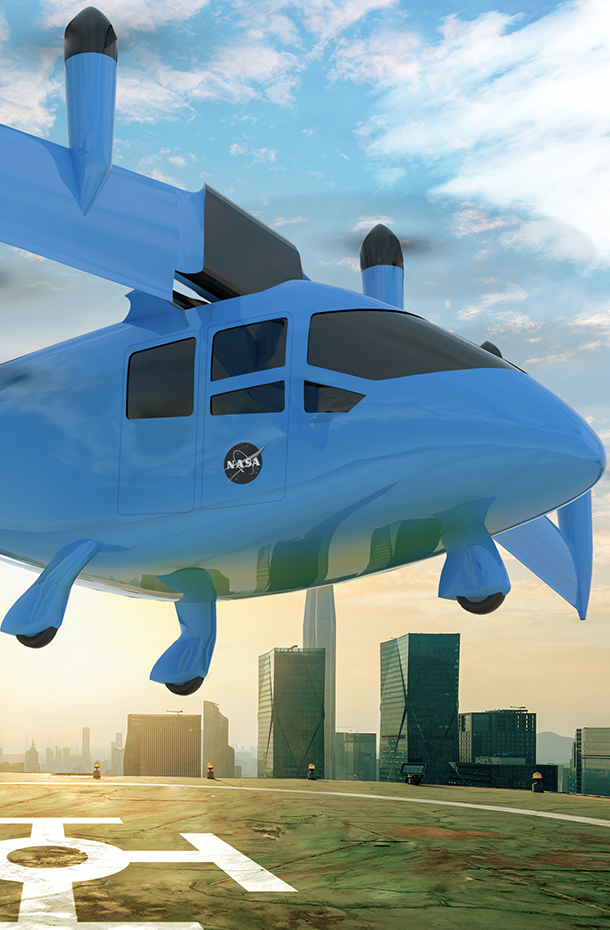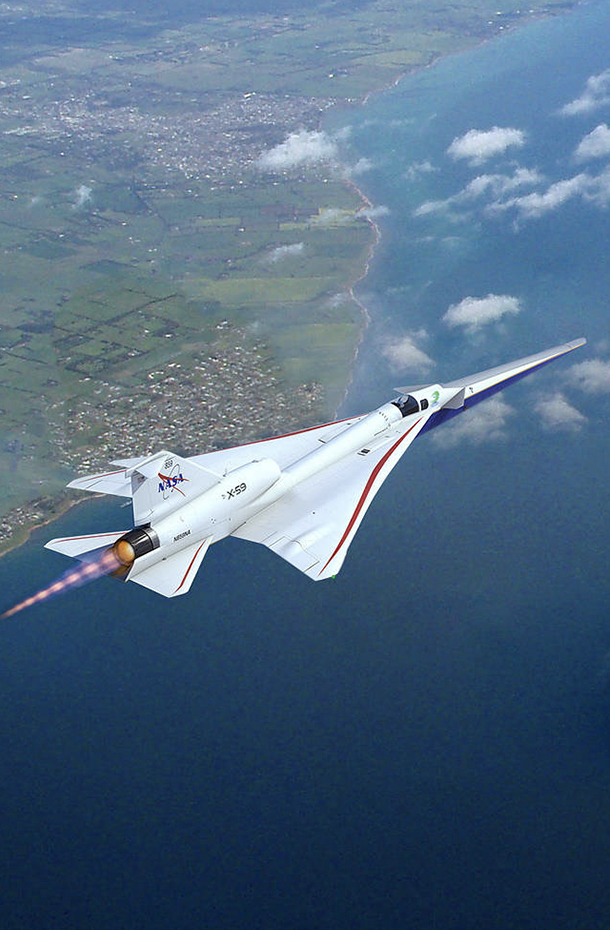NASA’s aeronautical innovators are ready to take things supersonic, but with a quiet twist.
For the first time in decades, NASA aeronautics is moving forward with the construction of a piloted X-plane, designed from scratch to fly faster than sound with the latest in quiet supersonic technologies.
The new X-plane’s mission: provide crucial data that could enable commercial supersonic passenger air travel over land.
To that end, NASA on April 2 awarded a $247.5 million contract to Lockheed Martin Aeronautics Company of Palmdale, Calif., to build the X-plane and deliver it to the agency’s Armstrong Flight Research Center in California by the end of 2021.
“It is super exciting to be back designing and flying X-planes at this scale,” said Jaiwon Shin, NASA’s associate administrator for aeronautics. “Our long tradition of solving the technical barriers of supersonic flight to benefit everyone continues.”
The key to success for this mission – known as the Low-Boom Flight Demonstration – will be to demonstrate the ability to fly supersonic, yet generate sonic booms so quiet, people on the ground will hardly notice them, if they hear them at all.
Current regulations, which are based on aircraft speed, ban supersonic flight over land. With the low-boom flights, NASA intends to gather data on how effective the quiet supersonic technology is in terms of public acceptance by flying over a handful of U.S. cities, which have yet to be selected.
The complete set of community response data is targeted for delivery in 2025 to the Federal Aviation Administration (FAA) and the International Civil Aviation Organization (ICAO) from which they can develop and adopt new rules based on perceived sound levels to allow commercial supersonic flight over land.
Years of sonic boom research, beginning with the X-1 first breaking the sound barrier in 1947 – when NASA was the National Advisory Committee for Aeronautics – paved the way for the Low Boom Flight Demonstrator X-plane’s nearly silent treatment of supersonic flight.
The answer to how the X-plane’s design makes a quiet sonic boom is in the way its uniquely-shaped hull generates supersonic shockwaves. Shockwaves from a conventional aircraft design coalesce as they expand away from the airplane’s nose and tail, resulting in two distinct and thunderous sonic booms.
But the design’s shape sends those shockwaves away from the aircraft in a way that prevents them from coming together in two loud booms. Instead, the much weaker shockwaves reach the ground still separated, which will be heard as a quick series of soft thumps – again, if anyone standing outside notices them at all.
It’s an idea first theorized during the 1960s and tested by NASA and others during the years since, including flying from 2003-2004 an F-5E Tiger fighter jet modified with a uniquely-shaped nose, which proved the boom-reducing theory was sound.
NASA’s confidence in the Low Boom Flight Demonstrator design is buoyed by its more recent research using results from the latest in wind-tunnel testing, and advanced computer simulation tools, and actual flight testing.
Recent studies have investigated methods to improve the aerodynamic efficiency of supersonic aircraft wings, and sought to better understand sonic boom propagation through the atmosphere.
Even a 150-year-old photographic technique has helped unlock the modern mysteries of supersonic shockwave behavior during the past few years.
We’ve reached this important milestone only because of the work NASA has led with its many partners from other government agencies, the aerospace industry and forward-thinking academic institutions everywhere.
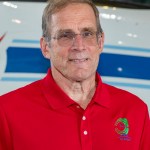
Peter Coen
NASA’s Commercial Supersonic Technology Project Manager
So now it’s time to cut metal and begin construction.
The X-plane’s configuration will be based on a preliminary design developed by Lockheed Martin under a contract awarded in 2016. The proposed aircraft will be 94 feet long with a wingspan of 29.5 feet and have a fully-fueled takeoff weight of 32,300 pounds.
The design research speed of the X-plane at a cruising altitude of 55,000 feet is Mach 1.42, or 940 mph. Its top speed will be Mach 1.5, or 990 mph. The jet will be propelled by a single General Electric F414 engine, the powerplant used by F/A-18E/F fighters.
A single pilot will be in the cockpit, which will be based on the design of the rear cockpit seat of the T-38 training jet famously used for years by NASA’s astronauts to stay proficient in high-performance aircraft.
Jim Less is one of the two primary NASA pilots at Armstrong who will fly the X-plane after Lockheed Martin’s pilots have completed initial test flights to make sure the design is safe to fly.
“A supersonic manned X-plane!” Less said, already eager to get his hands on the controls. “This is probably going to be a once-in-a-lifetime opportunity for me. We’re all pretty excited.”
Less is the deputy chief pilot for the Low Boom Flight Demonstrator. He and his boss, chief pilot Nils Larson, have already provided some input into things like cockpit design and the development of the simulators they will use for flight training while the aircraft is under construction.
“It’s pretty rare in a test pilot’s career that he can be involved in everything from the design phase to the flight phase, and really the whole life of the program,” Less said.
The program is divided into three phases and the tentative schedule looks like this:
- 2019 – NASA conducts a critical design review of the low-boom X-plane configuration, which, if successful, allows final construction and assembly to be completed.
- 2021 – Construction of the aircraft at Lockheed Martin’s Skunk Works facility in Palmdale is completed, to be followed by a series of test flights to demonstrate the aircraft is safe to fly and meets all of NASA’s performance requirements. The aircraft is then officially delivered to NASA, completing Phase One.
- 2022 – Phase Two will see NASA fly the X-plane in the supersonic test range over Edwards to prove the quiet supersonic technology works as designed, its performance is robust, and it is safe for operations in the National Airspace System.
- 2023 to 2025 – Phase Three begins with the first community response test flights, which will be staged from Armstrong. Further community response activity will take place in four to six cities around the U.S.
All of NASA’s aeronautics research centers play a part in the Low-Boom Flight Demonstration mission, which includes construction of the demonstrator and the community overflight campaign. For the low-boom flight demonstrator itself, these are their roles:
- Ames Research Center, California — configuration assessment and systems engineering.
- Armstrong Flight Research Center, California — airworthiness, systems engineering, safety and mission assurance, flight/ground operations, flight systems, project management, and community response testing.
- Glenn Research Center, Cleveland — configuration assessment and propulsion performance.
- Langley Research Center, Virginia — systems engineering, configuration assessment and research data, flight systems, project management, and community response testing.
“There are so many people at NASA who have put in their very best efforts to get us to this point,” said Shin. “Thanks to their work so far and the work to come, we will be able to use this X-plane to generate the scientifically collected community response data critical to changing the current rules to transforming aviation!”



























